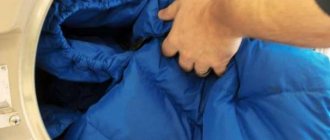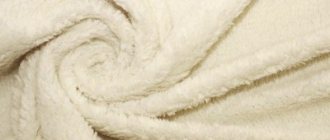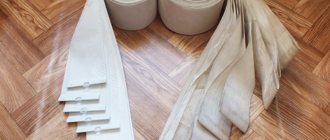Cotton blankets are in great demand among the population. The natural filler retains heat very well and prevents freezing in winter. In addition, it is environmentally friendly and does not cause allergies.
Many people are attracted by the affordable price of the product and long service life. But if you do not periodically monitor such a product, it will soon become a collector for dust and cause discomfort when using it.
Handwash
The most gentle and safe way to wash a quilted blanket is to process the product manually.
This is a time-consuming procedure and requires a lot of effort and attention. For washing you will need:
- warm water,
- liquid detergent and shavings of grated laundry soap.
- stain remover (if necessary),
- medium hard brush,
- foam sponge.
Have you washed your cotton blanket by hand before?
Not really
Washing a cotton blanket consists of several processes:
- Before starting the procedure, you must remove the item from the duvet cover.
- It is imperative to eliminate all existing defects on the bedspread. If there are holes in it, they need to be sewn up.
- Remove any dust from the product, shake it out or vacuum it, choosing the most powerful mode.
- The blanket should be laid out horizontally on a straight surface, for example, on the floor, after covering it with oilcloth.
- Apply a liquid solution with a spray bottle, which consists of warm water, liquid laundry detergent and laundry soap shavings. It is important that the detergent dissolves completely. Otherwise, the blanket will acquire a specific smell that will be difficult to get rid of.
- Carry out double-sided treatment with a brush, turning the blanket over to the other side.
- There is no need to crush the product too much.
- Also, do not pour a large amount of water on the item. It shouldn't get wet through. If puddles have formed on the surface, remove them with a dry cloth.
- In heavily soiled areas, it is necessary to use a stain remover.
- Using a sponge and clean cool water, remove the previously applied solution from the surface of the blanket. In order to completely remove the soap solution from the blanket, the rinsing procedure with a foam sponge must be carried out several times.
Learn how to machine and hand wash a camel wool blanket.
How to wash a sheep's wool blanket?
Manufacturers recommend local cleaning, that is, removing a specific stain. If the blanket looks shabby, dirty, or smells unpleasant, then of course it is better to wash it completely.
How to wash a sheep's wool blanket:
- It is better to do it in the bathroom, having previously collected water at a temperature of 30 degrees. A small amount of gel-like product with enzymes is diluted in it. After the product has completely dissolved in water, you need to immerse the blanket and wet it so that it is completely saturated with the detergent composition.
- In this form, the blanket is left in the soapy liquid for about two hours. After this, the liquid is drained, the blanket is washed, directing the stream from the shower. In this case, there is no need to turn the blanket over.
- When the dirty water has completely drained, you can close the bathtub with the stopper again and pour in clean water. Turn the blanket over again from side to side, but do not try to wash it like a regular item.
- There is no need to rub with your hands, as this will ruin the blanket. Repeat the clean water cycle several times as it will take a long time for the detergent particles to be washed out of the blanket fibers. After this, a spin is carried out.
Rubber balls for washing
Pre-soak
It is recommended to soak only if absolutely necessary, as the product deteriorates and loses its original appearance.
This is only possible if it is heavily soiled or if there is a persistent unpleasant odor. In this case, it is necessary to soak for no more than 30 minutes in warm water. Recommended temperature is about 30 degrees. Rinse off any remaining detergent under running water.
Detergent
To extend the life of your bed blanket and ensure it washes well, you need to choose the right detergent.
When washing, it is better to avoid regular washing powders, because they are very harsh, they are very difficult to rinse and they leave white streaks.
Important! An analogue of such detergents are liquid washing gels. They have minimal consumption and provide high quality processing, even at low water temperatures.
Such substances dissolve well in water, rinse well and simplify the washing process. They are safe for human health and do not cause allergies when inhaled, as they do not contain harmful chemical additives.
The best gels for these purposes are:
- Caress wool and silk,
- Synergetic,
- Gel Persil freshness from Vernel,
- Losk,
- Ariel,
- Attlack BioEX,
- Power Wash,
- Ariel Touch of Lenor Fresh
- Clean Home,
- Tide,
- Lion,
- Sano,
- Organic People,
- Ecover,
- Burti,
- Wellery.
The capsules are easy to use and cope well with heavy dirt and stains, but are not suitable for hand washing blankets.
Attention! The use of bleaches and aggressive agents is strictly prohibited.
When washing a cotton blanket, it is recommended to use detergents containing lanolin. Such preparations prevent the formation of lumps, so the filler does not get lost. When used regularly, lanolin makes cotton fibers softer and stronger.
What do you use to wash your blanket?
GelsPowders
General recommendations for washing blankets
There are three washing options:
- manual;
- in the typewriter;
- dry.
You can also use dry cleaning services. But, according to many housewives, the cost of such cleaning is comparable to the price of a new blanket. Before washing, carefully read the information on the blanket label, which contains the necessary information about proper care of the product. Some materials require dry cleaning only, others have restrictions on temperature, spinning or drying. Compliance with these recommendations is a guarantee of quality results.
Preliminary preparation
Immediately before washing:
- Check the integrity of the cover. If there are holes or loose seams, sew them up or put patches on them, otherwise during washing the fabric may tear even more, and the filling will come out through the holes and become deformed. Putting it back in and straightening it out will be difficult, and in the case of a duvet, impossible.
- In quilted products, quilting not only performs a decorative function, but also fixes the filling. If the seam is torn, it must be repaired before washing, otherwise the filler will clump together.
- Check the blanket for stains. If necessary, treat them with special means. Be sure to follow the instructions for use and dosage indicated on the package.
Machine washable
If the blanket can, in principle, be washed in a machine, compare the maximum load of the device indicated in the passport with the actual weight of the product. If the weight (usually indicated on the label) is less than the maximum permissible number of kilograms, the blanket can be washed in this machine.
Another way is to compare volume. If after loading the blanket there is a little free space left in the drum of the washing machine, you can wash it.
- Roll the blanket: fold it 3-4 times to form a long and narrow rectangle no wider than the depth of the machine drum, then roll it into a roller and load it into the drum in this position. Expanding naturally during washing, the product will adhere to the walls and create an even load on the drum of the washing machine.
- Load detergents into the container compartments. For the main wash, use liquid powders or gels, which dissolve better in water and rinse well, which means they will not cause allergic reactions, which is important for bedding. Add conditioner to the rinse compartment to soften the fibers of the blanket.
- Set the temperature, spin and drying in accordance with the recommendations on the product label and select an additional rinse.
Video: how to wash a synthetic blanket in a machine
Handwash
If machine washing is not possible, you will have to wash the blanket by hand. This can only be done in the bathtub, since no basins can accommodate a large product. The process is not easy: once wet, the blanket becomes very heavy, it is difficult to lift it and wash it like an ordinary thing. To make the task easier, let’s approach the process in a non-standard way.
- Fill the bathtub with water. There should be enough of it so that the blanket is completely submerged in water, but not too much. Temperature - according to the recommendations on the product label.
- Add detergent to the water and stir well. It should completely dissolve.
- Immerse the blanket in the cleaning solution.
- Next, start washing. The traditional approach involves “knocking out” the product, intensive lifting and lowering for 10–20 minutes, which, due to the large and heavy product, is not at all easy, requires effort and not weak physical fitness. But there is also an original way - to wash a blanket with your feet: stand on the blanket in the bath and dance on it for 10-20 minutes or just step over it, as you used to crush grapes with your feet in a barrel. Labor costs are much less, but the effect is the same - a clean blanket.
- Rinse the blanket several times in the same way until the water is clear after rinsing.
- The next stage is spinning. It is clear that it is impossible to squeeze it in the traditional way. And here's another life hack. Drain the water from the bathtub, press down the blanket with your hands or feet so that as little water remains in it as possible, then move it to the edge of the bathtub. Place two stools in the bathtub, place the product on them and sit on top of the blanket. The water that is still in it will flow down to the bottom of the bath. Leave it on the stools for a while longer: some of the water will drain, and the blanket will dry out and become lighter.
- Rearrange and straighten the product for complete drying.
Video: life hack for hand washing a blanket
Washing a blanket is not an easy task. But a dirty product does not look aesthetically pleasing and poses a health hazard. Therefore, feel free to get down to business, adhering to the recommendations described.
legkovmeste.ru
Instructions for processing in an automatic washing machine
The cotton blanket is very large in size and heavy in weight, and therefore may not fit into the drum of an automatic washing machine.
Also, the weight of the blanket when wet exceeds the permissible parameters and there is a risk of the machine failing. It is allowed to wash only a baby blanket (its weight is much less than an adult) in a washing machine on a gentle, gentle cycle with a minimum number of revolutions (400-500).
It is recommended to place special washing balls or tennis balls in the drum to prevent the filling from clumping.
To wash a baby blanket in a washing machine, you can use special large mesh bags.
It is better to refuse automatic spinning. Using this function can completely ruin the item. You can then squeeze it out manually. To do this, press on it so that excess water drains out. It is strictly forbidden to twist the product to avoid losing its original appearance.
Important! Do not leave a wet blanket in the washing machine drum after the end of the cycle. The longer it remains in a crumpled state, the higher the likelihood that the filler will get lost.
You can also use large bath towels. To do this, place the blanket between the towels and roll it up with a roller. After this you need to press down a little. Thus, the liquid will come out and be absorbed into the terry product.
You will find step-by-step instructions on how to wash a duvet at home in an automatic machine in this article.
Is it possible to wash a cotton blanket?
Despite the innovations in the field of bedding and their diversity, there are still many supporters of the quilted blanket - you can find it in almost every home.
But, covering yourself with the usual cotton blanket, few people think about how many years it has already served your family. If you sleep under it comfortably, then you completely forget how long ago you bought it. And the lifespan of such a product should not exceed 30 years!
During use, it absorbs a lot of dust and odors. The fabric of the cover loses its fresh appearance, and the cotton wool becomes an excellent breeding ground for dust mites and microbes. And now you are probably asking, what to do with such “wealth”?
We answer: you can use dry cleaning services. This is the simplest method, but it often leaves noticeable stains on the surface, and this procedure is expensive.
Articles on the topic (click to view)
- How to become a great lawyer?
- All the pros and cons of forged beds in the interior
- 29 years - Velvet wedding: description, meaning, options for celebration and gifts
- Why are solid doors better?
- Features of pool paths
- Green kitchen interior
- Fences for parking lots and parking areas
There is another way - to wash the blanket at home.
Another question immediately arises - what will happen to the cotton filler after washing? Don't worry, if you choose the appropriate cleaning method and follow all our recommendations, a positive, safe result is guaranteed.
Now let's look at all the existing options so that we can choose the most suitable one for ourselves.
Dry cleaning
You can avoid letting the blanket become heavily soiled and maintain freshness using dry methods:
- Ventilate regularly in fresh air.
- Knock out or shake out.
- Periodically dry in the sun.
- Vacuum at least once a year. To do this, you need to use special nozzles.
- It is useful to take the blanket out into the cold in the winter for several hours.
- Also, in winter, you can take the product outside, throw snow on it, leave it for a few minutes, and then sweep it away with a clean broom. Then the blanket must be thrown over the crossbar and carefully knocked out on both sides. You can repeat this procedure several times. This method allows you to get rid of dust, foreign odors and destroy all microorganisms.
- Potato starch is applied to the surface of the bedspread and pressed down with palms, left for 12 hours and then vacuumed thoroughly. This method is recommended for getting rid of dust and unpleasant odors.
- You can sprinkle a thin layer of table salt on the surface of the blanket - it absorbs persistent odors well. Leave for several hours, or better yet, overnight. In the morning, remove the salt with a vacuum cleaner or sweep it with a broom.
How to properly dry a product
Cleaning a cotton product at home is not the final stage. You need to dry the product properly. It needs to be dried horizontally. If it dries vertically, the filler will break down, lumps will form, and you will not be able to return to its original shape. During drying, the product must be turned over so that the blanket dries evenly. It is important that the cotton filler is completely dry, as if any moisture remains, mold will appear. And wet filler is a place for microbes to live.
During the drying process, beat the cotton product with your hands, level the filler, use a stick for this. It is important that you thoroughly clean the soap solution, and wringing the product is not recommended. It needs to be dried in the sun. Ultraviolet light will help get rid of germs and dust mites. If you washed during the cold season, you can use artificial heating, but not at high temperatures. Before washing, you need to get rid of dust, shake the blanket well.
hozuyut.ru
Steam treatment
Another effective way to clean a bedspread is steam treatment (if the temperature indicated on the label allows it). This method will not only remove stains, but also disinfect the filler.
Steaming is possible using a hand-held steam generator, iron or vacuum cleaner:
- Place the product on a horizontal surface.
- Spray stain remover onto stains.
- Lightly wet the product with water.
- Thoroughly steam on both sides at a 90 degree angle.
- Dry in the sun.
The reasons why a steam generator sprays water instead of steam are discussed here. You can find out what water to use for the steam generator here.
Removing stains
If the stain is small, there is no need to wash it entirely. It is enough to wash the dirty area with a properly selected product, rinse under running water and dry. You can use a hairdryer to dry:
- Stains from chocolate, cocoa, coffee or tea can be easily cleaned with a solution of 200 ml of warm water, 1 tablespoon of ammonia and 1 tablespoon of dishwashing detergent or liquid soap.
- If a child spills brilliant green or iodine, do not despair. You just need to wipe with a gauze swab, generously soaked in a 3% solution of hydrogen peroxide.
- Stains from fruits, berries or tomatoes can be rubbed with lemon juice or a solution of 9% vinegar and water (1:1).
- The blood is washed off from the fabric with cold water and laundry soap. Old stains are wiped with a mixture of water and 3% hydrogen peroxide solution.
- Greasy traces from cream or food must first be wiped with ammonia, then washed off with a solution of water and dishwashing detergent.
Attention! When removing stains from a product, do not make special efforts to avoid rubbing the fabric cover.
You can find 11 simple recipes for cleaning your mattress from stains and odors at home here. Also find out how to clean carpet stains at home.
Drying rules
To ensure that the filler does not get lost and the product does not lose its shape, the drying process must be carried out following certain rules:
- The washed blanket should be spread horizontally in the open sun until completely dry. Ultraviolet rays kill bacteria and dust mites that may appear in the litter.
- If it is not possible to dry the cotton product in the fresh air, you can dry it in a well-ventilated area near heating devices. This is because cotton filling dries slowly. For greater effect, you can use a hairdryer or fan heater.
- During drying, it is necessary to break the filler using a stick for this purpose. This prevents the formation of lumps inside the blanket.
- During the drying process, it is periodically necessary to turn the blanket over and straighten the filling with your hands or a stick.
If you dry the item properly, it will not show stains from powders, stains or mold.
Useful care tips
- The cotton blanket should be dried regularly in the fresh open air.
- Blow dust out of it regularly.
- If it is not possible to knock out the item, it should be treated with a vacuum cleaner.
Caring for a cotton blanket is quite complicated. Washing it at home is long and difficult. However, the result justifies the product, because a soft and clean blanket will warm you every night.
Going to dry cleaning
There are certain times when you should contact a dry cleaner:
- There are no conditions for washing and drying.
- If there is a need to wash a blanket in the winter season.
- If the product label states that washing is prohibited.
- The presence of difficult stains that cannot be removed at home.
- The blanket is very large and cannot be washed by yourself.
Delicate dry cleaning of a cotton blanket is carried out using dry and water methods using professional cleaners that do not deform the structure of the filler and fabric.
In addition, specialists select preparations that are compatible with the material and carry out preliminary cleaning.
Advice! People suffering from allergies or bronchial asthma are not recommended to dry-clean their bedding, as there will likely be traces of chemicals in the filling, which can provoke an allergic reaction.
Manual method for large blankets
Large blankets that do not fit in the washing machine will have to be washed by hand. This need arises with large double and euro sizes, as well as with those types that cannot be machine washed (for example, quilted).
The main problem that housewives face when washing a large blanket is that it becomes too heavy to lift because it becomes saturated with water. Quilted fabric, in addition, unravels, losing its shape and texture. The optimal way to wash a blanket without tearing or ruining the item is to wash it horizontally, unfolded. It can only be done on the street.
- We spread a large sheet of polyethylene on the asphalt, on which the blanket will subsequently be laid out. Before doing this, you need to put a long stick in the middle - it is needed to dry the product. Make sure the stick is durable and will not stain the fabric after contact with water.
- Lay out the blanket and pour soapy water over it. To foam the solution more strongly and allow it to be absorbed into the depths of the filler, you need to walk on top of your feet. This way the material will not be damaged or become lumpy.
- Next, the soap solution is thoroughly washed out using a watering hose.
- You can squeeze out excess moisture by rolling the blanket into a roll and applying a little pressure on top.
- To dry, the item is unrolled and the stick is raised like a horizontal bar. At first, the height of several bricks is enough to allow the moisture to gradually drain from the middle to the edges. Next, the height needs to be increased until the fabric stops touching the ground.
Some tips for housewives
- It is better to buy a blanket with frequent stitching. The small squares prevent the filling from bunching up inside the pockets.
- It is better to wash bedding in the summer, when things dry quickly.
- During the drying process, the blanket should not be hung, as this can lead to deformation from the inside, that is, there will be a lot of crumpled cotton wool from one part, and emptiness will form in other places.
- The presence of holes and tears in the fabric cover is unacceptable, otherwise the cotton wool may come out when washed.
- Do not leave the blanket wet for a long time. Mold may form in it.
- In order for the water to come out faster, the blanket must first be folded into a narrow strip, and then rolled tightly into a roll. This way, all the water will flow out, and the cotton wool will not form clumps.
- The blanket must be washed as soon as it gets dirty (or twice a year as planned). If you have pets that really like to sleep with their owners in the same bed, then the bedding needs to be washed more often.
- You should not exceed the dosage of detergent; this will not improve the quality of the product, but will only make it more difficult to rinse foam from fabrics.
- It is not recommended to wash this blanket alone. It is necessary that there is another person in the apartment to help wring out the water from the blanket.
- During use, you can get rid of lumps if you regularly beat and shake the blanket.
There are several ways to get rid of the smell of urine on a blanket. It is not always possible to remove the acrid stench even after several washing cycles.
To do this, you can use special preparations, and also follow some of your grandmother’s methods:
- vinegar treatment,
- soaking in a solution of potassium permanganate,
- hanging the blanket out in the cold for three to four days. All odors will freeze out and the product will smell of freshness. Washing a cotton blanket cannot be called an easy process, but with regular and careful care, such a product will last for decades and will delight its owner with warmth and freshness.
Types of blankets and washing features
Many people rightly believe that washing a blanket is too labor-intensive. It may not fit in a household washing machine, and when washed by hand, as soon as it gets wet, it becomes too heavy to lift. In addition, the care for products made from different materials differs. And not all fillers can be washed.
How to wash and dry a cotton blanket
Buyers usually pay attention to the size, color, filling and thermal qualities of the product.
issues related to caring for him are relegated to the background.
A cotton-filled blanket is the best example of this. Having many advantages, it can cause a lot of trouble. Natural cotton filling is an ideal place for dust and microorganisms to accumulate, so it needs to be cleaned regularly and thoroughly. At the same time, the blanket does not tolerate interaction with water well and becomes heavy when wet. The cotton wool may form clumps and the product will lose its original qualities. It is recommended to remove dirt by dry cleaning. In particularly difficult cases, a slightly damp treatment with foam can be carried out.
- Shake out or vacuum the blanket. It is important to thoroughly clean the surface from dust so that further contact with water does not create dirt that will be very difficult to clean. You can use a carpet beater. Just don’t overdo it so as not to spoil the product.
- Prepare a detergent solution: dissolve in water and beat the powder or washing gel into a foam, and if using laundry soap, its shavings.
- Use a sponge to scrub the surface of the blanket. Pay special attention to dirt and shiny areas. Try not to soak the sponge in the solution, only grab the foam. Do not let the filler get wet . It will be difficult to dry, and clumps that have formed will be difficult to restore.
- Remove any remaining foam with a sponge, frequently rinsing it in clean water and squeezing it well.
Bacteria quickly develop in damp natural material, so you should dry the cotton blanket immediately after cleaning:
- Lay it out on a horizontal surface. When drying vertically, the product may become deformed.
- It's better to do this outdoors. The sun's rays not only promote rapid drying, but also effectively kill various bacteria. To prevent the blanket from fading and losing its bright colors, cover the product with a thin cloth. For example, you can put an old sheet on top.
- If the blanket is being dried indoors, use a fan to speed up drying.
- Shake and turn the blanket periodically. Straighten the filler to avoid the formation of lumps.
How to wash a wool blanket
This product is no less difficult to care for than cotton wool. But washing in a gentle cycle is allowed. The most common blankets are made from sheep, camel and llama wool. The cleaning rules are the same as for all woolen products:
- wash only in warm water (not higher than 30 ° C), as the material shrinks in hot water;
- Use special products for wool products that are designed taking into account the characteristics of the fiber structure, effectively remove dirt and protect the fabric from damage - Euro Wish, Denkmit, Formil Wool gel, HEY-Sport or liquid lint powder;
- do not rub the product: when washing by hand, clean it by lifting it and lowering it into a soap solution, and very carefully “stroke” heavy dirt with a soft-bristled brush;
- When washing in a machine, place the blanket in a fabric bag to protect the filters from contamination by wool fuzz;
- rinse it in the same water as when washing: temperature changes will cause the blanket to shrink;
- do not wring or twist woolen items, but let the water drain naturally;
- dry flat and flat.
Many people ask whether it is necessary to wash a new blanket, for example, if it has a specific sheepskin smell. If it's just an unpleasant odor, there's no need to do this. It is enough to ventilate the product well in the fresh air for 3–4 hours. The smell will go away. If the purity of the material is in doubt, it is better to wash it. After all, a dirty blanket is not only an unsightly appearance, but also a direct threat to health.
Features of washing down and silk blankets
Manufacturers, as a rule, recommend dry cleaning of down and silk products. The internet often recommends washing the cover and filling separately. But in the case of a duvet, the cover will have to be ripped apart, which is very labor-intensive and ineffective. The main difficulty is caused by 2 factors:
- fluff may become matted during washing;
- the product does not dry well.
But a duvet can be washed efficiently at home. Here are some simple tips that will improve your results:
- Set your machine to the Delicate or Fluff cycle. Set the temperature no higher than 30 °C.
- Use a detergent designed specifically for down jackets - Down and Wool Wash or Heitmann, etc. These preparations contain lanolin, which provides natural protection to the structure of feathers and down, i.e., protects them from matting.
- Place 3-5 rubber laundry balls in the washing machine drum to prevent the filler from matting. They can be replaced with regular tennis balls.
Dry the blanket horizontally in the fresh air or in a well-ventilated area. Place a terry sheet or towel underneath to absorb moisture, turn the blanket over regularly and replace the wet sheet with a dry one. Knead the clumps of down filling with your hands. This must be done in each cell of the blanket throughout the entire drying process.
Silk blankets usually have a zipper in the side seam, which makes it easy to remove the filling and wash it separately from the cover, and return it to its place after drying. The cover is washed in accordance with the requirements for the fabric from which it is made, and the filling must be soaked in a warm soapy solution for 1–2 hours, and then rinsed thoroughly and dried in a horizontal position.
Tips for washing synthetic blankets
Synthetic winterizer and a more modern product filled with holofiber are the easiest to care for. Dust mites do not take root in them, fungus and mold do not grow, and odors do not persist. Synthetic blankets are not afraid of water, can withstand numerous washes and dry quickly:
- temperature conditions: padding polyester - 40 °C, holofiber - up to 60 °C;
- detergent can be used one third less than usual for this amount of laundry;
- wring at high speeds and shake the product immediately after washing to restore its original shape;
- You can dry it both horizontally and vertically, as well as in the washing machine.
Caring for flannelette, patchwork and plant fiber filled blankets
- The flannel blanket is easy to wash and does not require careful care. The water temperature should not exceed 40 °C. It can be wrung out in a machine, but at minimum speed, and it is recommended to dry it vertically on a line.
- The peculiarity of a patchwork quilt is the large number of seams. Before washing, it is necessary to check their integrity, otherwise the threads may come apart during the process, and the edges of the flaps may become very frayed. As a result, the blanket will become unusable. The water should be slightly warm, which is due to the variety of colors: the product may fade. To avoid this, add vinegar to the water at the rate of 1 tbsp. l. per liter of water. The final rinse should be done in the same solution. The brightness of the colors will be guaranteed.
- Bamboo and coconut fillings are easily washed in warm water at a temperature not exceeding 30 °C. You can use minimal spin. The only drawback is that they do not tolerate exposure to bleaches.











